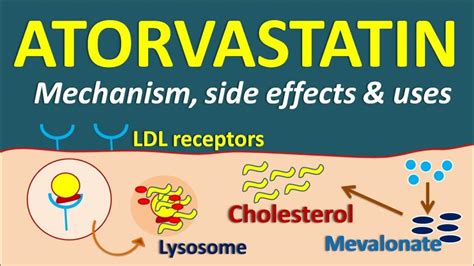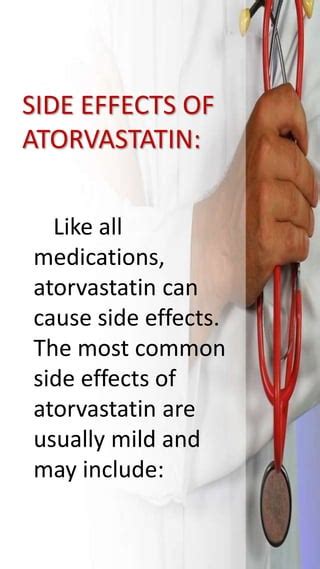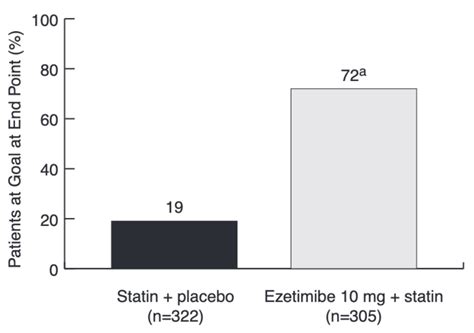Intro
Atorvastatin is a medication that has gained significant attention in recent years due to its effectiveness in managing cholesterol levels and reducing the risk of cardiovascular disease. As a statin, atorvastatin works by inhibiting the production of cholesterol in the liver, which in turn helps to lower the levels of bad cholesterol, or low-density lipoprotein (LDL), in the blood. But what exactly does atorvastatin do, and how does it achieve its beneficial effects? In this article, we will delve into the world of atorvastatin, exploring its mechanisms, benefits, and potential side effects, as well as providing practical examples and statistical data to support its use.
Atorvastatin is a widely prescribed medication, with millions of people around the world taking it to manage their cholesterol levels. But despite its popularity, many people are unaware of how atorvastatin works, or what benefits it can provide. By understanding the mechanisms behind atorvastatin, individuals can make informed decisions about their health and take a more active role in managing their cholesterol levels. Whether you are taking atorvastatin or considering starting treatment, this article aims to provide a comprehensive overview of this important medication.
The importance of managing cholesterol levels cannot be overstated. High levels of LDL cholesterol can increase the risk of cardiovascular disease, including heart attacks, strokes, and peripheral artery disease. By reducing LDL cholesterol levels, atorvastatin can help to mitigate this risk, providing individuals with a valuable tool in the fight against cardiovascular disease. But atorvastatin's benefits extend beyond just cholesterol management, with research suggesting that it may also have anti-inflammatory properties and improve overall cardiovascular health.
How Atorvastatin Works

In addition to its effects on cholesterol production, atorvastatin may also have anti-inflammatory properties, which can help to reduce inflammation in the body. Chronic inflammation is a known risk factor for cardiovascular disease, and by reducing inflammation, atorvastatin may help to mitigate this risk. Furthermore, atorvastatin may also improve endothelial function, which can help to improve blood flow and reduce blood pressure.
Benefits of Atorvastatin
The benefits of atorvastatin are numerous and well-documented. Some of the key benefits of atorvastatin include: * Reduced risk of cardiovascular disease: By lowering LDL cholesterol levels, atorvastatin can help to reduce the risk of cardiovascular disease, including heart attacks, strokes, and peripheral artery disease. * Improved cholesterol profiles: Atorvastatin can help to improve overall cholesterol profiles, reducing LDL cholesterol levels and increasing high-density lipoprotein (HDL) cholesterol levels. * Anti-inflammatory effects: Atorvastatin may have anti-inflammatory properties, which can help to reduce inflammation in the body and mitigate the risk of cardiovascular disease. * Improved endothelial function: Atorvastatin may also improve endothelial function, which can help to improve blood flow and reduce blood pressure.Side Effects of Atorvastatin

It is essential to note that not everyone who takes atorvastatin will experience side effects, and the benefits of taking the medication often outweigh the risks. However, individuals who experience side effects should consult their healthcare provider, who can help to manage any adverse effects and adjust treatment as needed.
Who Should Take Atorvastatin
Atorvastatin is typically prescribed for individuals who have high levels of LDL cholesterol and are at risk of cardiovascular disease. This may include individuals who: * Have a family history of high cholesterol or cardiovascular disease * Are overweight or obese * Have high blood pressure or diabetes * Smoke or have a history of smoking * Have a history of cardiovascular disease, including heart attacks, strokes, or peripheral artery diseaseIndividuals who are considering taking atorvastatin should consult their healthcare provider, who can help to determine whether the medication is suitable for their needs. It is essential to follow the recommended dosage and treatment plan, as well as attend regular check-ups to monitor cholesterol levels and adjust treatment as needed.
Practical Tips for Taking Atorvastatin

By following these practical tips, individuals can get the most out of atorvastatin and reduce their risk of cardiovascular disease.
Statistical Data
Numerous studies have demonstrated the effectiveness of atorvastatin in reducing the risk of cardiovascular disease. For example: * A study published in the Journal of the American College of Cardiology found that atorvastatin reduced the risk of major cardiovascular events by 35% in individuals with high levels of LDL cholesterol. * A study published in the New England Journal of Medicine found that atorvastatin reduced the risk of heart attacks, strokes, and peripheral artery disease by 25% in individuals with a history of cardiovascular disease.These statistics demonstrate the significant benefits of atorvastatin in reducing the risk of cardiovascular disease and highlight the importance of managing cholesterol levels.
Conclusion and Future Directions

We invite readers to share their experiences with atorvastatin, ask questions, or provide feedback on this article. By engaging with the content and sharing knowledge, individuals can help to promote a better understanding of atorvastatin and its role in managing cholesterol levels.
Final Thoughts
Atorvastatin is a powerful tool in the fight against cardiovascular disease, and its benefits extend beyond just cholesterol management. By combining atorvastatin with a healthy lifestyle, including a balanced diet, regular exercise, and stress management, individuals can reduce their risk of cardiovascular disease and improve overall health. We encourage readers to take an active role in managing their cholesterol levels and to consult with healthcare providers to determine the best course of treatment.What is atorvastatin used for?
+Atorvastatin is used to lower cholesterol levels and reduce the risk of cardiovascular disease.
How does atorvastatin work?
+Atorvastatin works by inhibiting the enzyme HMG-CoA reductase, which plays a crucial role in the production of cholesterol in the liver.
What are the potential side effects of atorvastatin?
+Common side effects of atorvastatin include muscle pain, liver damage, and increased risk of diabetes.
